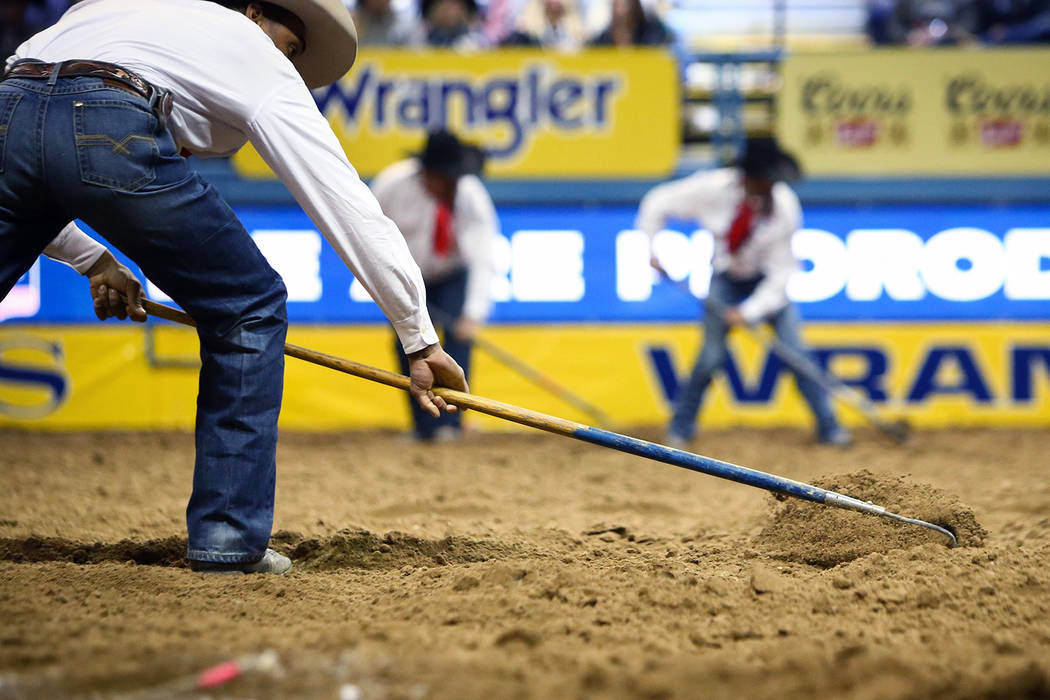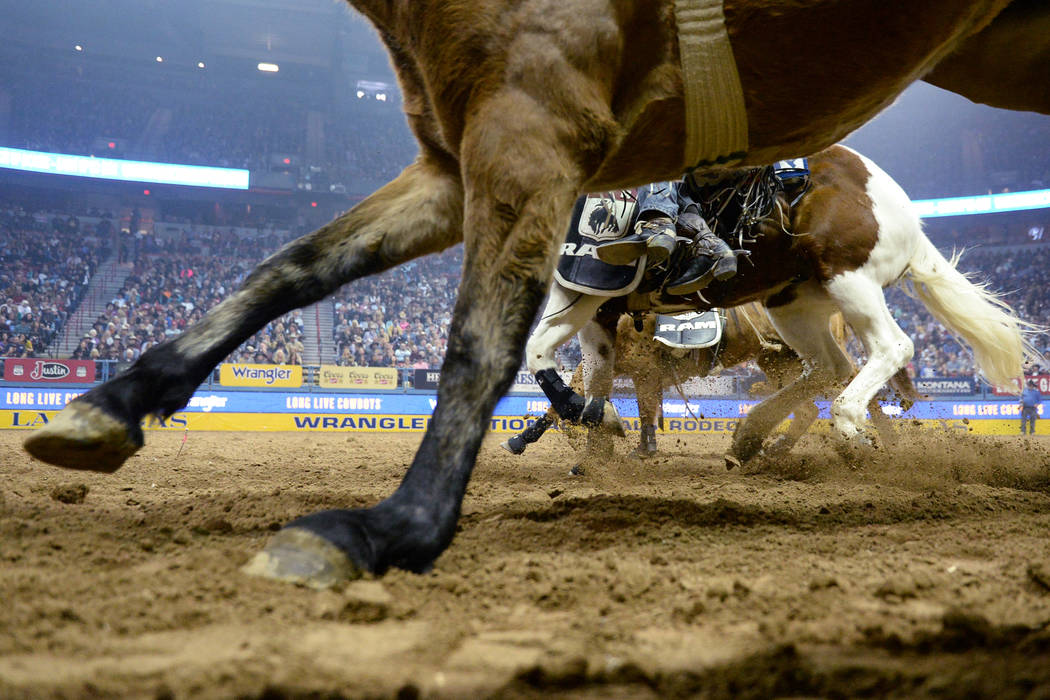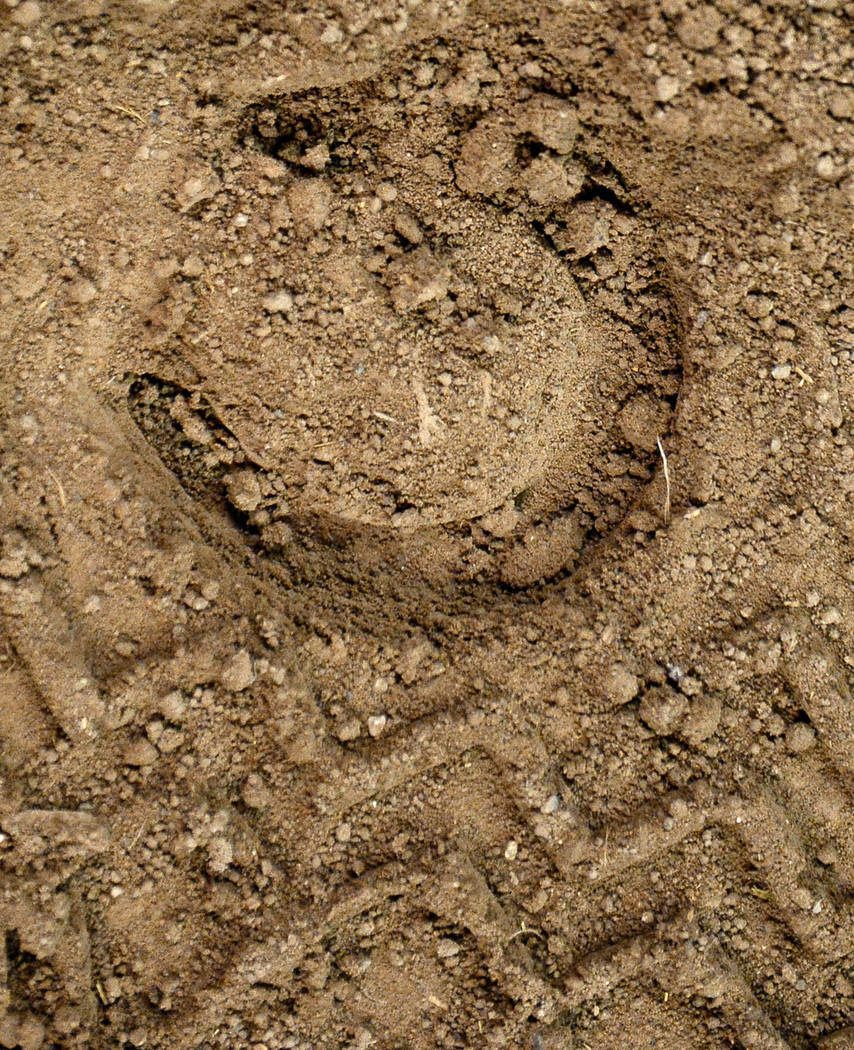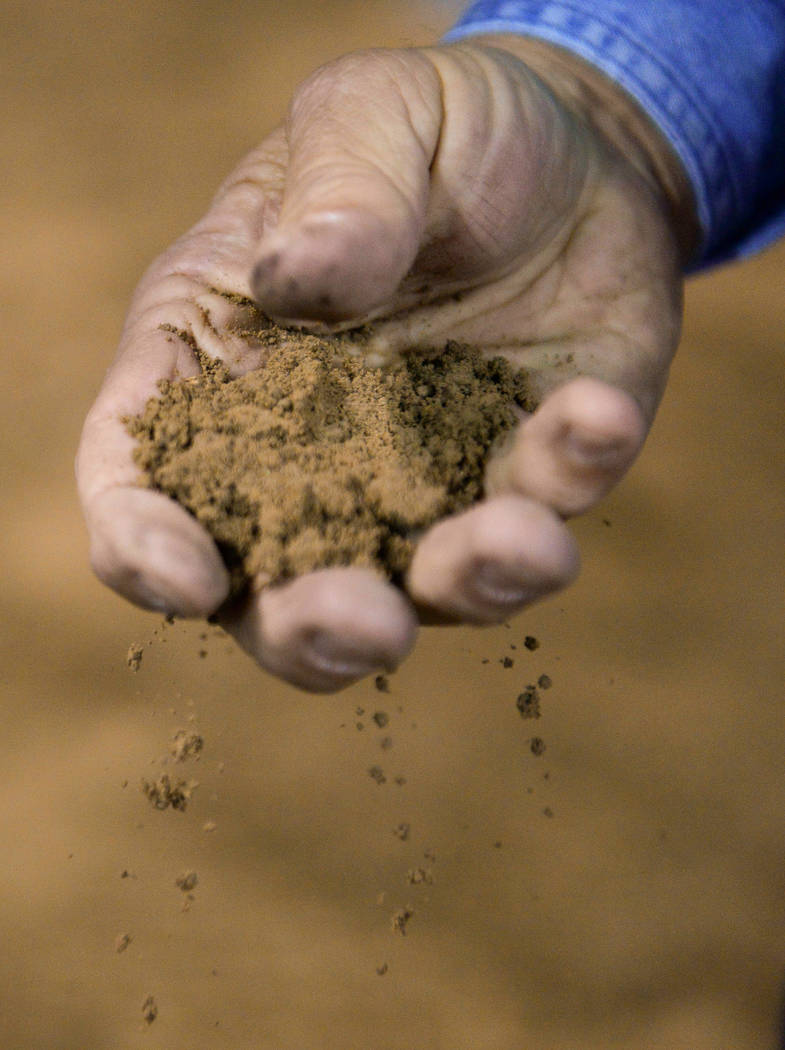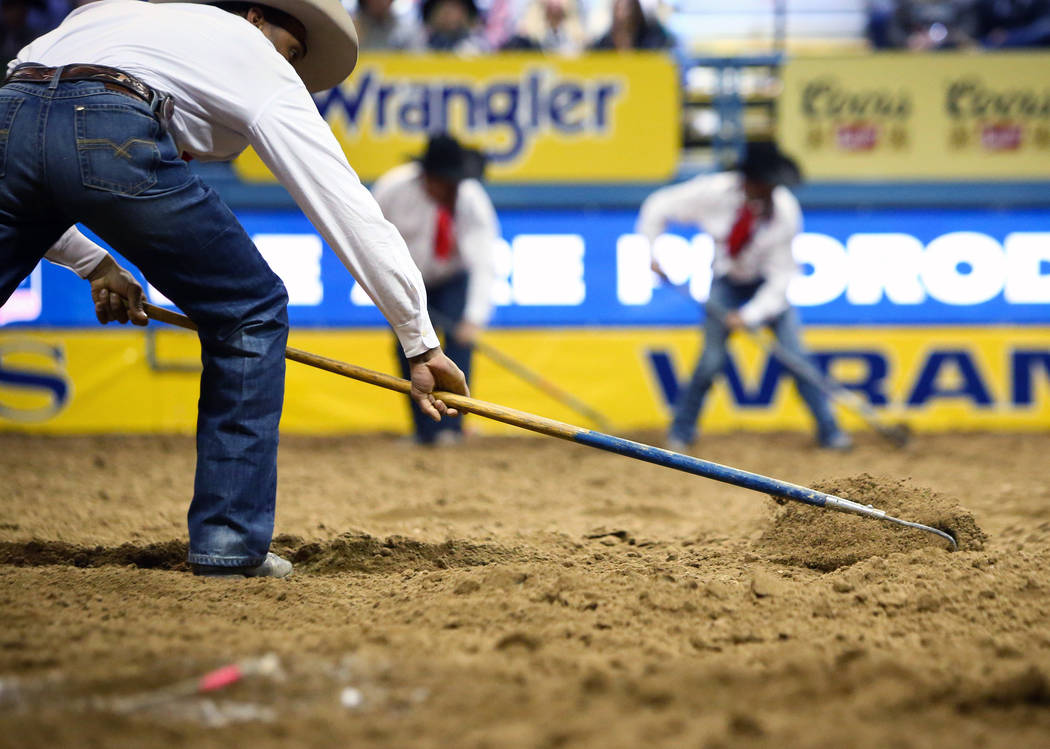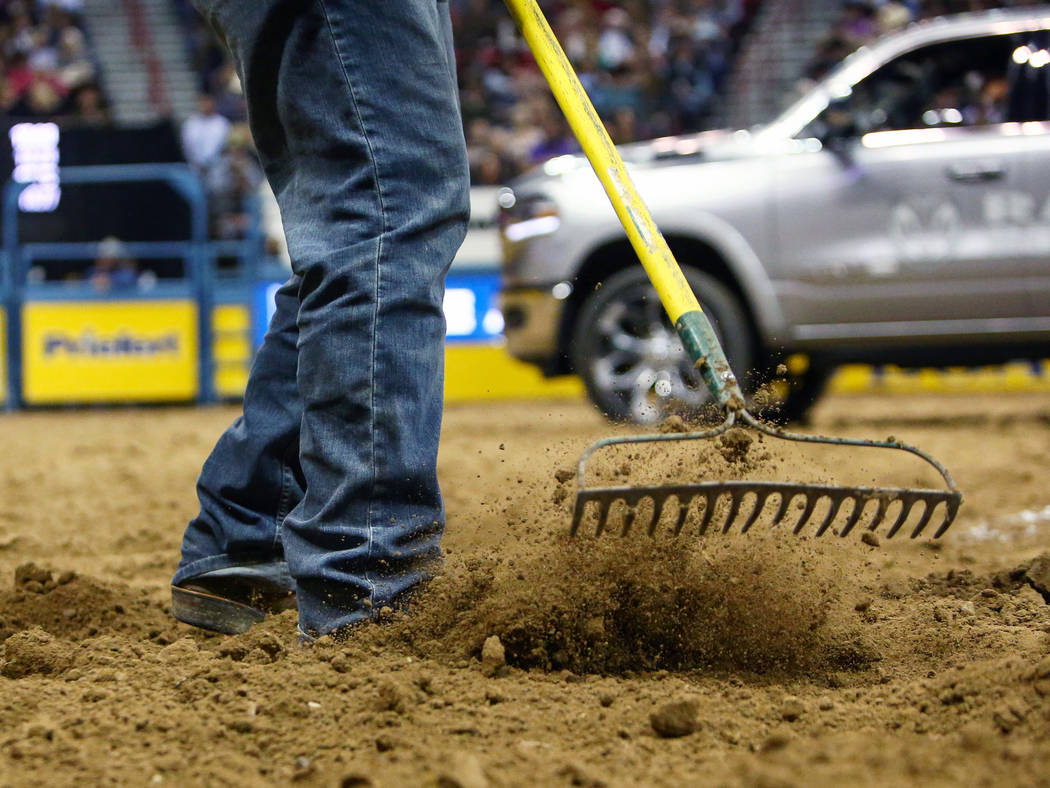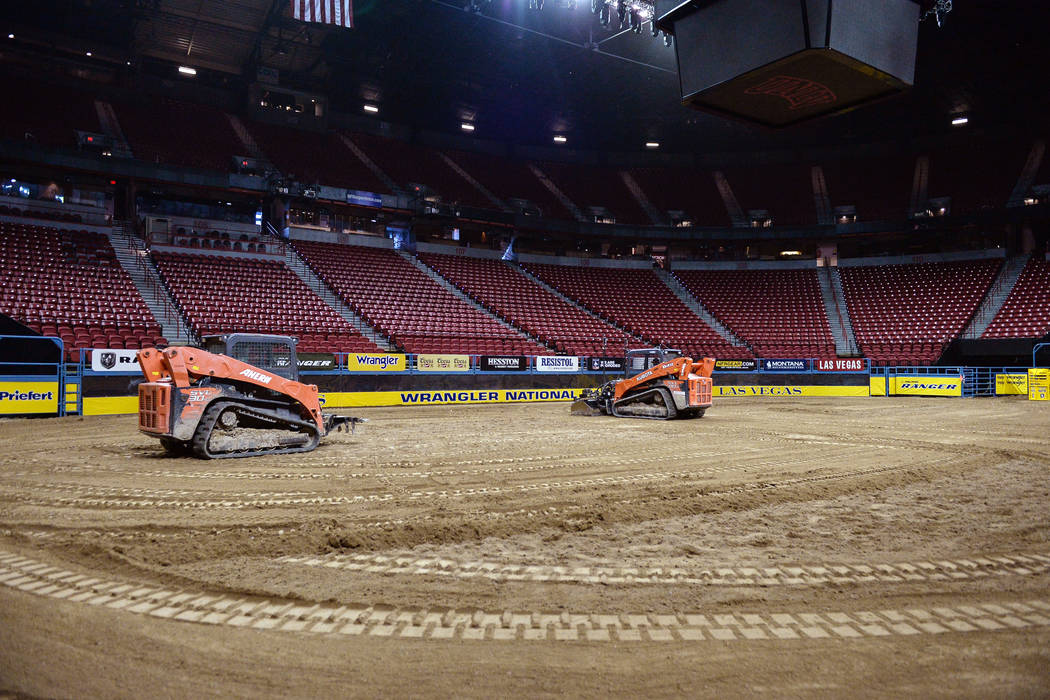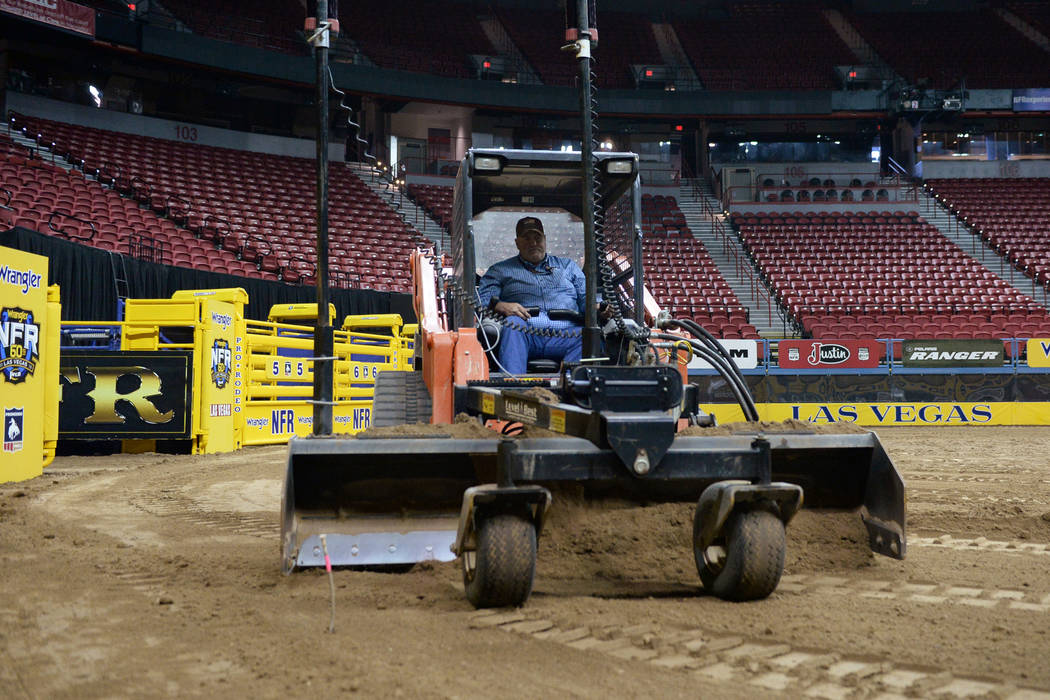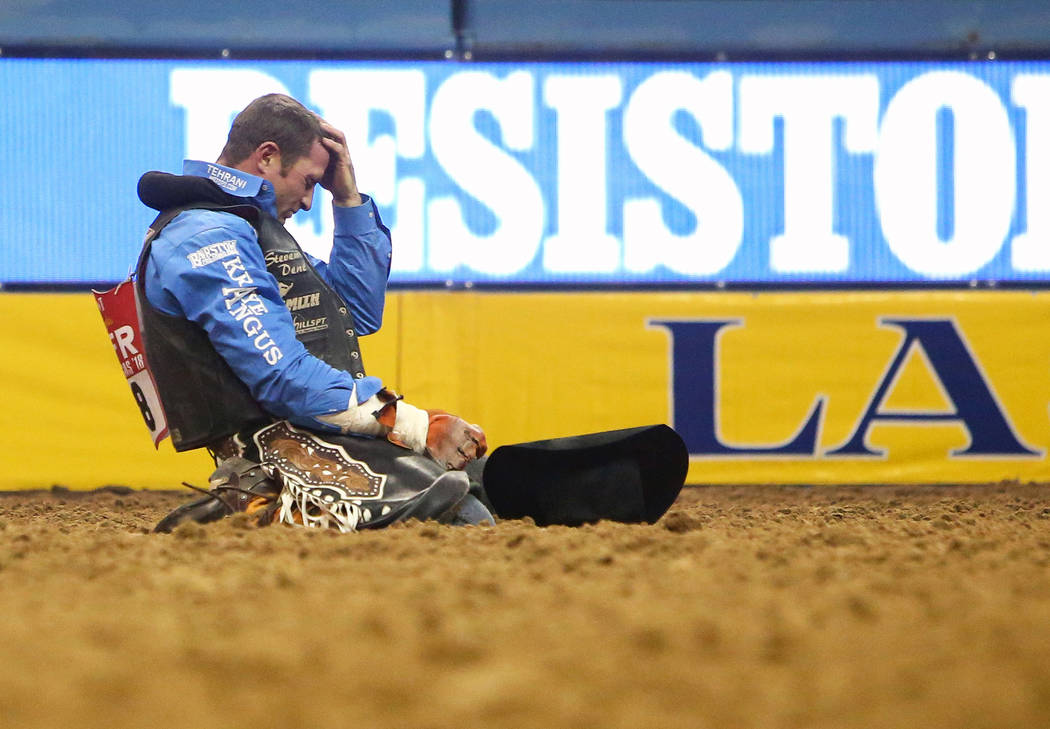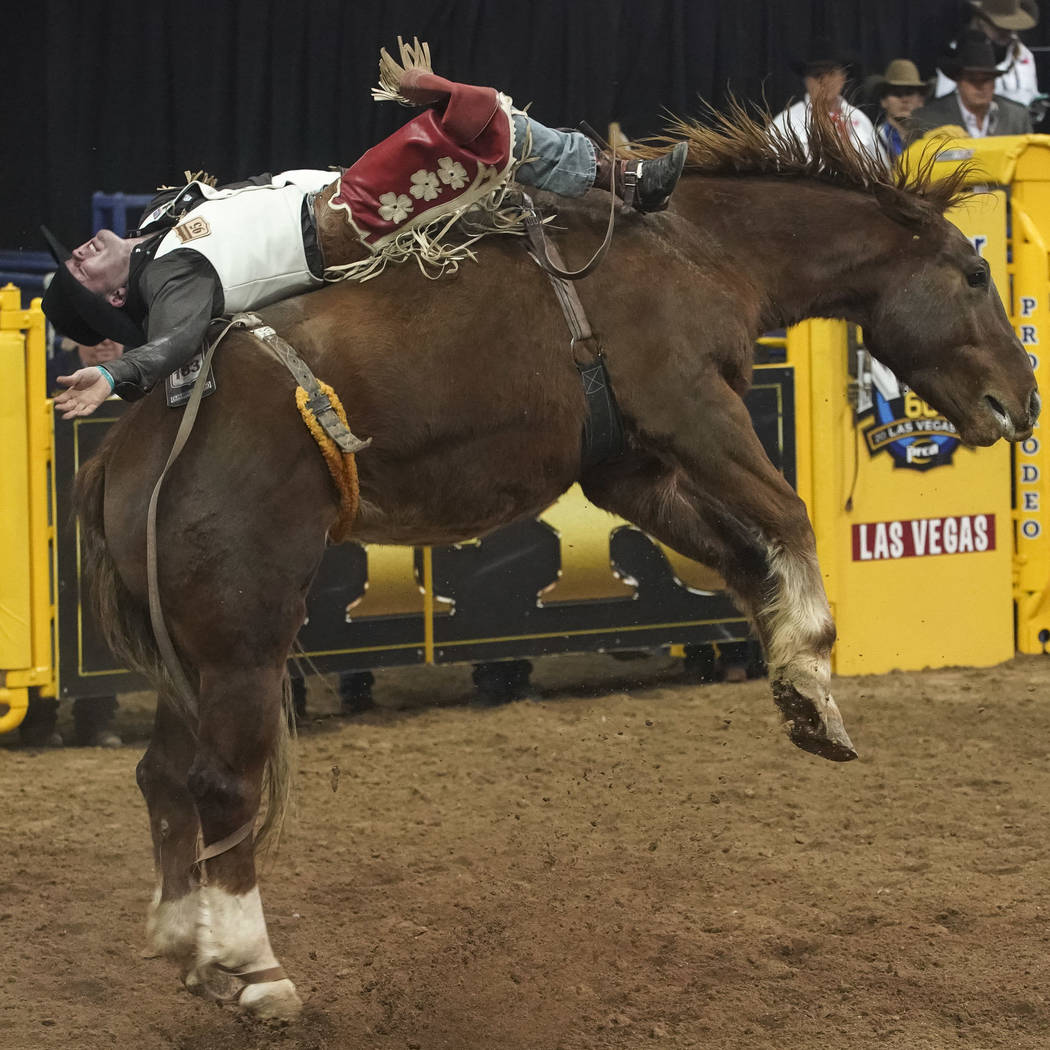When it comes to staging a successful NFR, it’s all in the dirt
This is a column about dirt, and I have never felt dumber in my life.
John Jamison was nice enough not to laugh as I stared blankly through his explanation of how important soil is to the arena floor at the National Finals Rodeo, patient enough to pause between points about aluminum sulfate and triple superphosphate and placidity and pliability and capsulating carbonates from water in Nevada.
Kind enough not to throw a clump of it at me when I wondered: You mean fertilizer?
Jamison has built racetracks from Indiana to Peru, has spent 40 years studying the surface on which different horses run and perform, knows more about pedology and edaphology than Steph Curry does the mechanics of a jump shot.
“I like to say this isn’t an exact science, but there is a lot of science to it,” Jamison said. “Cowboys are probably the most amicable pro athletes there are because they realize a lot goes into this, but that’s not to say if they get beat, they’re not going to look for a scapegoat.”
And if it’s not them or the horse, it must be … the dirt?
The eighth go-round of the NFR played out Thursday night at the Thomas & Mack Center and, like always, Jamison as the ground manager spent his time beforehand measuring and laser testing and watering and tending to the dirt, of which 1,200 tons at 12 inches deep lay across the floor where seven events are contested nightly.
In all, 2,500 tons are delivered to the home of UNLV basketball a few days before the NFR commences, spread out over six hours and then, following the 10th and final go-round, packed and stored behind the arena until next year.
Which means on those nights folks think the Rebels stink, well, the odor might be more than just their offense.
Jamison works for Allen Rheinheimer, the NFR’s construction maintenance manager, who works for Sean Davis, the outgoing general manager, who remembers those final days in Oklahoma City, where the event took place for 20 years before moving to Las Vegas in 1985 and the dirt was all sorts of trouble in the end.
“The year before we moved, the texture wasn’t right and all the barrel racing horses fell,” Davis said. “So when we came here, we wanted to make sure that didn’t happen. Now, there are a lot of places you can go find good dirt, but back then in Las Vegas, you had clay or sand or rocks. So we started out with a lot of trial and error to get it where we wanted over time.”
Think of a cowboy or cowgirl as an NFL player deciding which cleats to wear on a certain surface, be it grass or turf.
Those in different rodeo events need different dirt.
The ones atop bucking stock need the horse to plant and jump off the top layer. Those in timed events need it to slide. Those racing around barrels need it to dig as much as 8 inches deep when turning.
It’s different from one end of the arena to the next. You don’t want it looking like a perfectly manicured infield at Dodger Stadium. Jamison doesn’t just drag the dirt. He rips it, tills it, packs it, breaks it up.
From the top level of particles all the way down to silt and every compaction rate in between, footing is brought to the surface.
A dirty success
Then you have Monday, when this happened …
The steer wrestling winner went 3.6 seconds.
The bareback winner scored a 93.
Of the top six in barrels, times fell between 13.51 to 13.86.
Translation: A great night for dirt.
“A great night for cowboys and cowgirls,” said Rheinheimer, who has worked the NFR since 2000.
The truth: Nevada dirt is good for building roads. It blows for a rodeo.
So to reach a happy medium for the NFR’s needs while not having to pay a small ransom to transport the great stuff from, say, dirt heaven of South Hampton, New York, Jamison and Rheinheimer continue to assess the surface daily, ensuring it’s flowable and workable, amending the makeup of it while always remaining aware of things such as atmospheric pressure.
Moisture, it seems, can really mess with the final product.
“You don’t want it shiny,” Jamison said. “You want some texture to it. It has to be able to move and push and have some side pressure to it. It has to hold up for one event as much as it does for a completely different one. Then this ends, and we begin screening and testing it all over again for next year.”
They say cowboys aren’t afraid to get dirty.
Who knew so much went into it?
Contact columnist Ed Graney at egraney@reviewjournal.com or 702-383-4618. He can be heard on “The Press Box,” ESPN Radio 100.9 FM and 1100 AM, from 7 a.m. to 10 a.m. Monday through Friday. Follow @edgraney on Twitter.
South Dakota rookie wins bareback riding
Shane O'Connell knew Black Leg would be a handful, it being an eliminator pen horse, this being the National Finals Rodeo, he being a rookie bareback rider competing among so many greats.
"World champions and veterans with gold buckles as far as the eye can see," O'Connell said. "When you nod your head (on Black Leg), you better bear down. He really bucked and blew my foot out there a little, but other than that, I just picked him up and stayed in time and beat him into the ground.
"If I didn't, it would have been a dogfight, and he might have won."
Black Leg didn't win.
O'Connell rode him to a score of 89 and won the event Thursday night during the eighth go-round at the Thomas & Mack Center, earning the cowboy from Rapid City, South Dakota, his first NFR victory and $26,230.77.
"I was injured much of the summer but arrived to Las Vegas healthy and hungry," said O'Connell, 23. "This is the biggest win of my life, for sure. I've had 89 a couple times, but never for this much money.
"I dreamed about winning here my whole life. I figured I'd get beat on that horse, but was able to pace around a bit before … I can't imagine what my old man was feeling up in the stands."
Other go-round winners were Tyler Waguespack, Gonzales, Louisiana, in steer wrestling (3.70 seconds); Bubba Buckaloo, Kingston, Oklahoma, and Chase Tyran, Helena, Montana, in team roping (3.60 seconds); (tie) Chase Brooks, Deer Lodge, Montana, and Rusty Wright, Milford, Utah, in saddle bronc riding (90.0 points); Ryan Jarrett, Comanche, Oklahoma, in tie-down roping (7.3 seconds); Taci Bettis, Round Top, Texas, in barrel racing (13.57 seconds); and (tie) Joe Frost, Randlett, Utah, and Chase Dougherty, Canby, Oregon, in bull riding (89.5 points).



